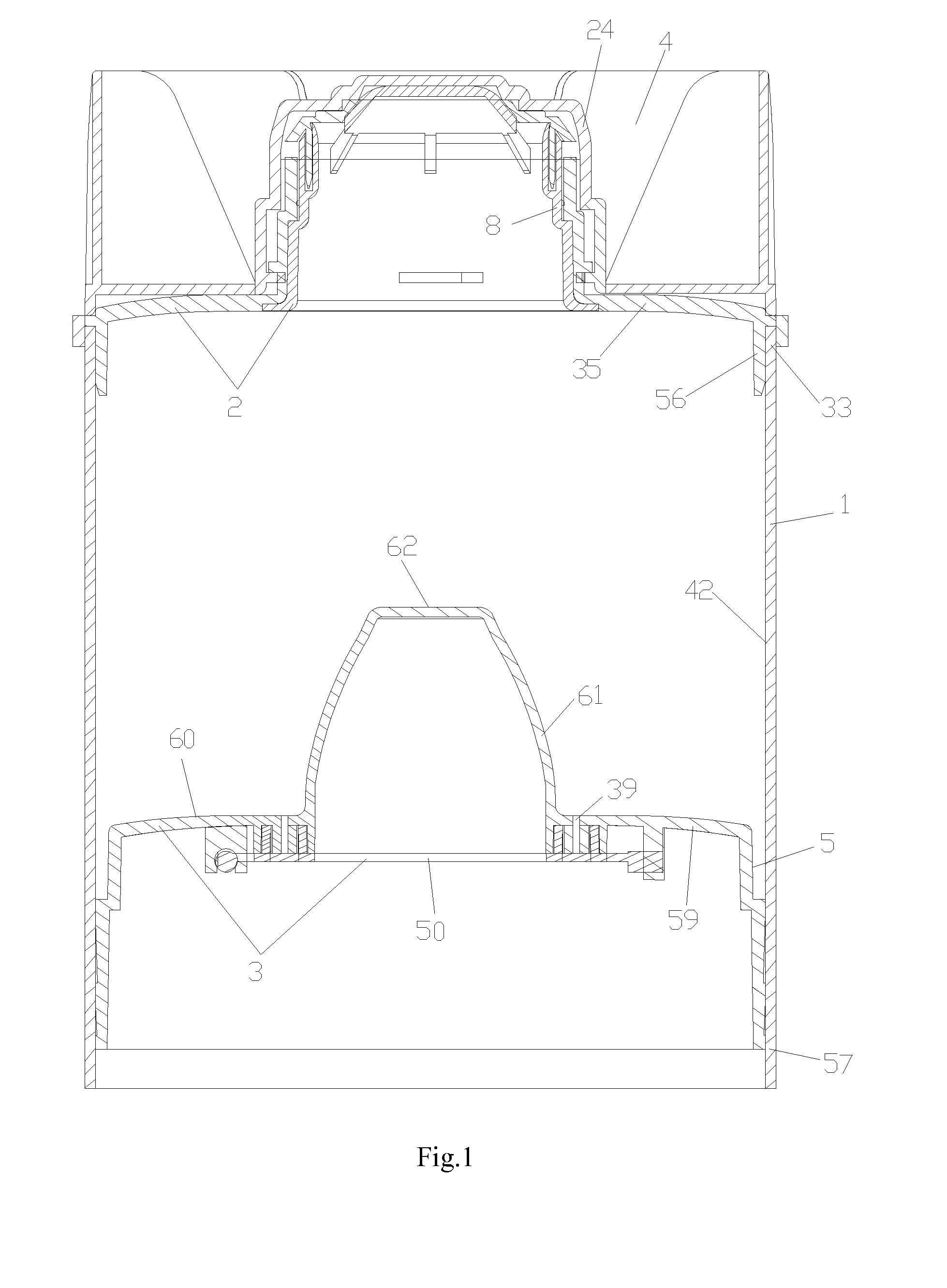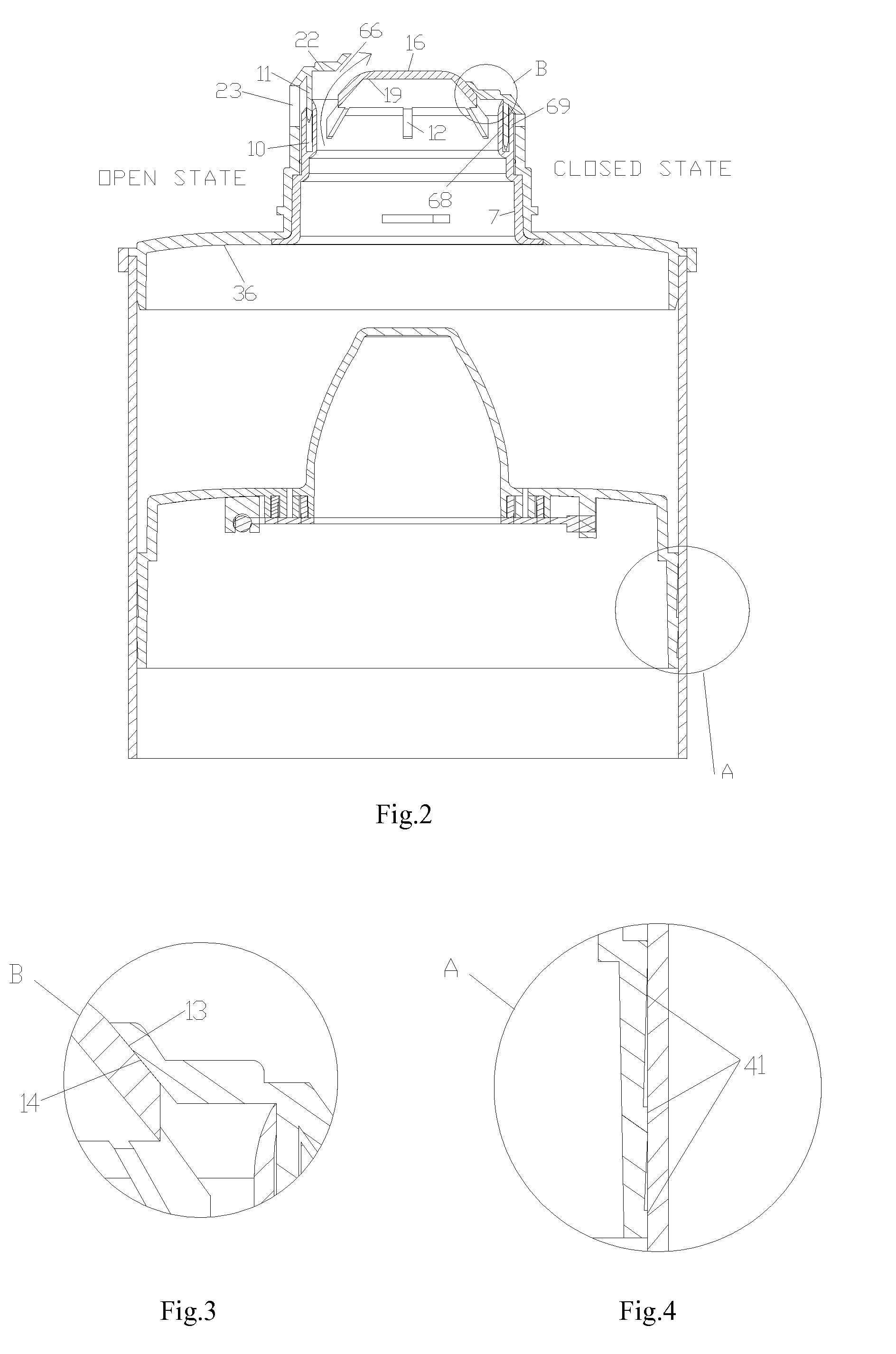However, this type of structure allows the air to get into the cylinder through the gap in between the cooperating area of the ink-spilling mouth and the sealing lid; when packaging the piston of the rear end, air can not completely exhaust out of the cylinder and it makes the air stay in the cylinder; as a result, the ink is oxidized, and it in turn influences the quality of the ink, blocks the ink spilling mouth, and eventually disenables the ink' flowing out.
1. A valve sleeve is put over the outer wall of the convex central body, which allows the spherical top of the convex central body to pass through the annular ink-spilling mouth of the top of the valve sleeve, and allows the rim of the valve sleeve to cling to the spherical top of the convex central body. Due to the very little sealing area of this sealing structure between the valve sleeve and the convex central body, which is almost just an annular line and the sealing width is less than 1 mm, once the hot ink gets
cooling down after the
package procedure, the volume of the ink gets contracting and accordingly produces negative pressure; plus the gravity, it makes it very easy for the air outside to get into the joint of the valve sleeve and the convex central body. Therefore, it causes the ink to get oxidized and get peeling, and accordingly affects the quality of the ink, clogs the ink spilling mouth, and eventually cuts off the ink supply.
2. The connection fashion of the valve sleeve and the convex central body is not tight, easy to be loose, which also makes it for the air to get into the cylinder from the loose cooperation gap.
3. Besides, due to the short
stroke, which is less than 3 mm, of the S-shaped wall ribs of this patent in the valve sleeve, the annular ink-spilling mouth, which size depends on the
stroke of the S-shaped wall ribs, is just a narrow space. Therefore, it is likely for the ink-spilling mouth to get clogged; the ink pressure gets increased, and then accordingly causes the occurrence of unexpected ink spurt.
4. Also, the structure of the S-shaped wall ribs makes the minimum
working pressure for opening the ink spilling mouth to be more than 5 bar, which is too high and likely to cause the piston inside the cylinder to turn sideways and further disenables the ink supply.
5. The connection structure and sealing fashion of the inner wall of the U-profile window and the outer wall of the
mouthpiece neck of the convex central body make it likely happen that the ink, under pushing, leaks from the gap between the inner wall of the U-profile window and the outer wall of the
mouthpiece neck.
6. The patent is designed only for being used with the plastic cylinder of an ink container. However, the performance and quality of plastic cylinders is not stable, and the cooperation gap between the cylinder and the piston can not be guaranteed very well.
1. The axis of the two exhaust pores is perpendicular to the axis of the plastic cylinder and the air inlets of the exhaust pores are located at the sides of the front end face of the piston. Therefore, the exhaust pores on the sides are not able to expel all air in the container cylinder, and it accordingly causes the ink to be oxidized and peel, and eventually influences the quality.
2. Because there is no any sealing device to cover the air outlets of the exhaust pores on the rear end face of the piston, ink would leak out from them.
3. In addition, the cylindrical bulge of the piston and the vertical ink-guiding groove on the surface of the cylindrical bulge hinder the air from exhausting. When the piston is pushed by an outer force to move along the inner wall of the cylinder, because the top of the cylindrical bulge impacts the ink and produces central whirlpools bigger than the cylindrical bulge itself, the ink under the
impact will move toward the
peripheral area of the bulge; therefore, the air in the cylinder will rapidly flow to and gather around the cylindrical bulge and the vertical ink-guiding groove, and can not exhaust out of the cylinder. When the bulge entirely gets into the ink and the ink covers the frontal end face of the piston, there is still air staying around the cylindrical bulge and at the vertical ink-guiding groove, which will make the ink to peel and dry, and accordingly affect the ink quality directly.
4. The container cylinder is also made of plastic. The conventional plastic cylinder tends to expand and contract more easily as the temperature changes; thus, it is easier to deform and crack. In addition, the taper degree generated during the manufacture might cause the inner
diameter of the container cylinder with a smaller front part and a bigger rear part, which will influence the cooperation gap between the container cylinder and the vacuum piston. When the cooperation is looser, the piston might separate from the cylinder, while the cooperation is tighter, the pressure of supplying ink increases, and in turn causes higher pressure in the cylinder, then the piston will be stuck in the cylinder and it finally fails to supply the ink.
 Login to View More
Login to View More  Login to View More
Login to View More 


